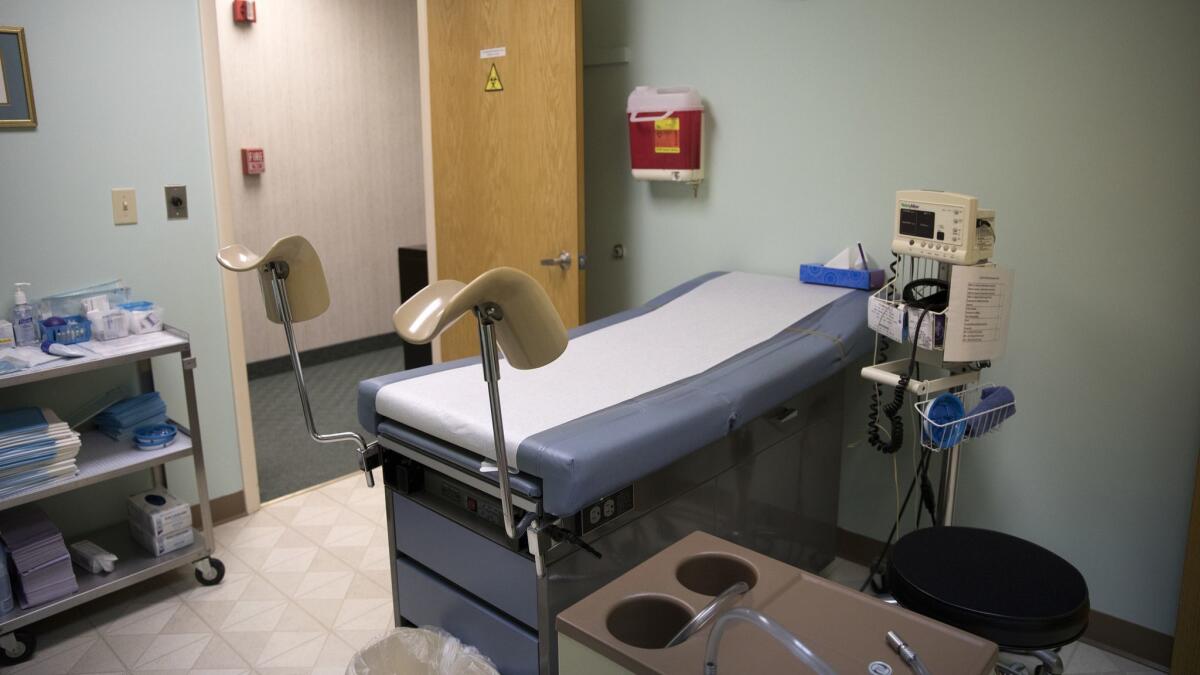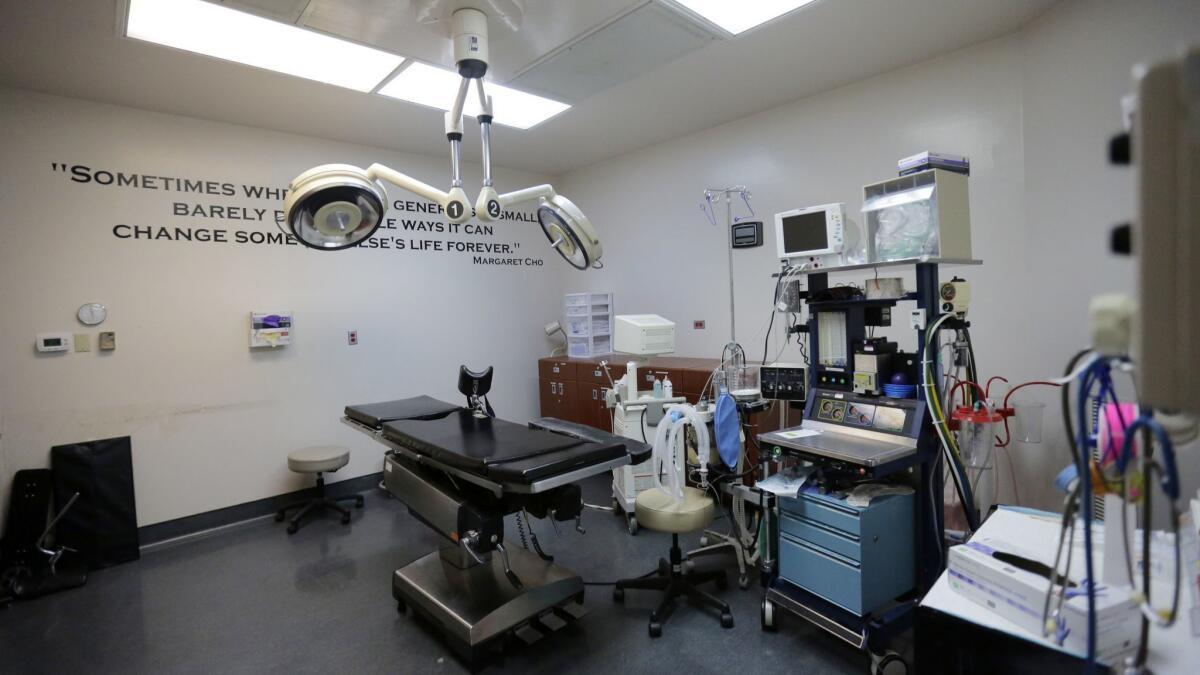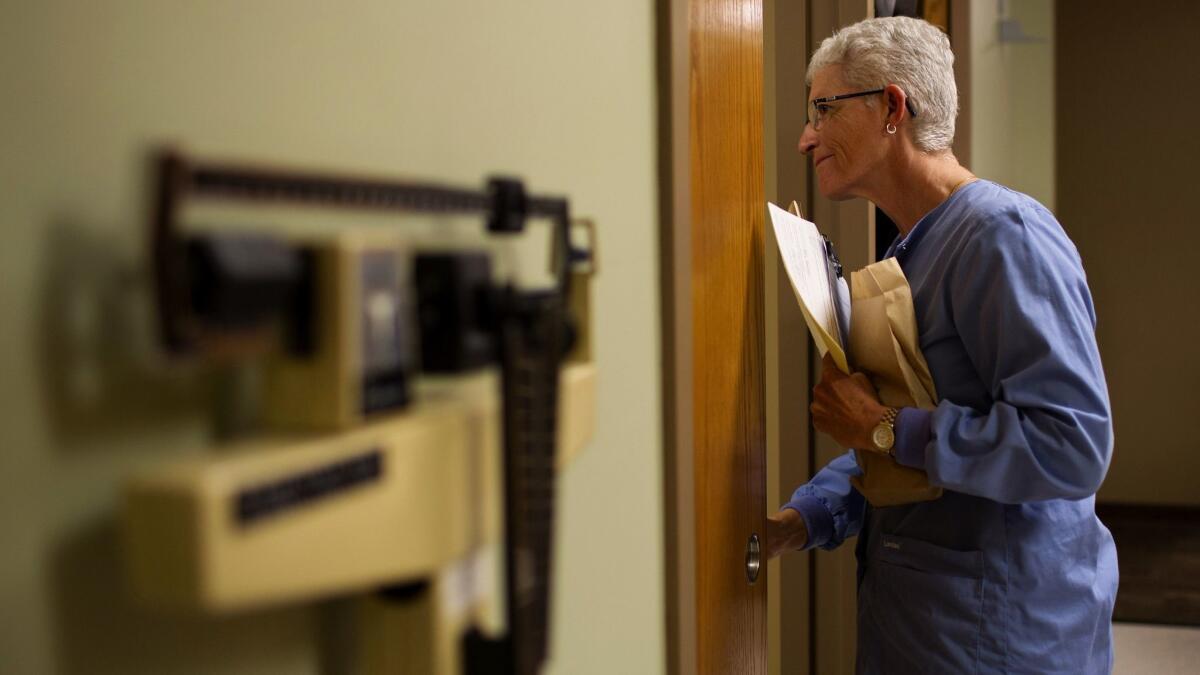The National Academies take a hard look at the safety and quality of abortion care in the U.S.

Legal abortions in the United States are so safe and effective that the vast majority of them can be performed in office-based settings, according to a new consensus report from the National Academies of Sciences, Engineering and Medicine. But not all women have timely access to them, due largely to restrictive state policies.
The roughly 200-page report on the safety and quality of abortion care could provide guidance to policymakers and medical practitioners looking for ways to best serve patients’ needs.
For the record:
8:35 p.m. March 21, 2018An earlier version of this article said the abortion rate was 29.3% per 1,000 women in 1980 and 14.6% per 1,000 women in 2014. The correct figures are 29.3 abortions per 1,000 women in 1980 and 14.6 abortions per 1,000 women in 2014.
Here’s what you need to know about its findings.
Most abortions are performed very early
There are four kinds of abortions:
- Medication, also known as the “abortion pill,” involves a timed combination of mifepristone and misoprostol to induce contractions, and can be used up to 10 weeks’ gestation.
- Aspiration uses a syringe or electronic device attached to a tube to vacuum out the uterus’ contents, and can be performed up to 14 to 16 weeks.
- Dilation and evacuation involve dilating the cervix and then using suction or forceps to empty the uterus, and is typically used starting around 14 weeks.
- Induction requires medication to induce labor and delivery, and is used in later pregnancies.
Late abortions are very rare, though, the study found. The vast majority of abortions — a full 90% — took place by 12 weeks’ gestation in 2014. The number of very early abortions (six weeks or sooner) has also been on the rise, making up 38% of early abortions in 2013. As medication abortions become more widespread, the researchers say, that share is expected to grow.

Abortions are on the decline. Here’s who’s still getting them
The abortion rate fell by more than half between 1980 and 2014, from 29.3 abortions per 1,000 women to 14.6 per 1,000 women. The researchers did not analyze why but did point out some of the usual suspects for this drop: the rise in contraceptive use, historic declines in unintended pregnancy rates and an increase in state regulations on abortion.
Women seeking an abortion in 2014 were more likely to be under 30 (72%), unmarried (86%) and poor or low-income (75%), the review found. They were also more likely to be women of color (61%), primarily black and Hispanic.
Abortions generally don’t need to be performed at a hospital and don’t always need a doctor to be present
In 2014, the vast majority of abortions were performed in office settings. Some 59% were performed at an abortion clinic, 36% at a clinic offering a range of medical services and 5% at a hospital.
Trained physicians aren’t the only medical professionals who can provide abortions, the authors found. Certified nurse-midwives, nurse-practitioners and physician assistants can provide medication and aspiration abortions.

Abortions are very safe
As a rule, the earlier the abortion takes place, the safer it is for the woman.
That said, thanks in part to decades of medical advancement, the chances of complications from an abortion at any stage are very small, the researchers said.
“I think people often highlight later-stage issues, when in fact the vast majority of abortions are early in pregnancy and overwhelmingly very, very safe,” Helene Gayle of the Chicago Community Trust, who co-chaired the committee that wrote the report, said at a news briefing Friday.
For women who decide to give birth after already having had two or more abortions, there was some increased risk of a preterm birth before 28 weeks. For women with no abortion history, the rate of such preterm births was 3 per 1,000 births. For women who’d had two abortions, the rate rose to 6 per 1,000 births and for women who had had three or more abortions, the rate rose to 11 per 1,000 births.
But the scientists did not find substance in claims that having an abortion raised the risk of breast cancer, mental health disorders and other issues.
Not everyone has equal access to abortion care
Legal abortions are safe and effective. That doesn’t mean everyone who wants one can get one. That’s partly because the number of abortion clinics fell to 272 in 2014, down 17% from 2011. In 2014, 39% of women of reproductive age lived in a county without an abortion provider. A full 25 states have five or fewer abortion clinics, and five states have only one. This means that about 17% of women have to travel more than 50 miles to have a safe, legal abortion.
That’s not to mention that many states regulate where, when and how abortions can take place, and who can perform them. The researchers list several restrictions, among them:
- Requiring office-based clinics to meet hospital-level structural standards, even for simple procedures
- Prohibiting the abortion method that is most effective for a particular patient
- Instituting mandatory waiting periods that needlessly delay care from a clinical standpoint
- Prohibiting qualified clinicians (such as nurse practitioners) from performing abortions
- Requiring the informed-consent process to include inaccurate statements on abortion’s long-term physical and mental health effects
- Barring publicly funded clinics from providing abortion care to low-income women
- Mandating clinically unnecessary services (i.e. pre-abortion ultrasounds or in-person counseling visits)
“The regulations may limit the number of available providers, misinform women of the risks of the procedures they are considering, overrule women’s and clinician’s medical decision-making, or require medically unnecessary services and delays in care,” the study authors wrote.

The upshot
The earlier in pregnancy an abortion is performed, the safer it is. From that viewpoint, medically unnecessary delays don’t do a patient any favors, the researchers said.
“I think it was really striking that so many of the regulations really have an effect of potentially compromising quality for women,” Alina Salganicoff of the Kaiser Family Foundation, a member of the committee that wrote the report, said at the briefing. “I don’t think that’s the intention of the regulations, but that is the impact in many cases.”
The committee members in their report said they refrained from making policy recommendations themselves. But they added in the briefing that they hoped policymakers and medical practitioners would take these comprehensive findings into account.
Follow @aminawrite on Twitter for more science news and “like” Los Angeles Times Science & Health on Facebook.
MORE IN SCIENCE
In a first, the FDA announces its intention to reduce the amount of nicotine allowed in cigarettes
Move over, Neanderthals: Our ancestors mated with Denisovans not once but twice, scientists say
Evolve or die: Why our human ancestors learned to be social more than 320,000 years ago







